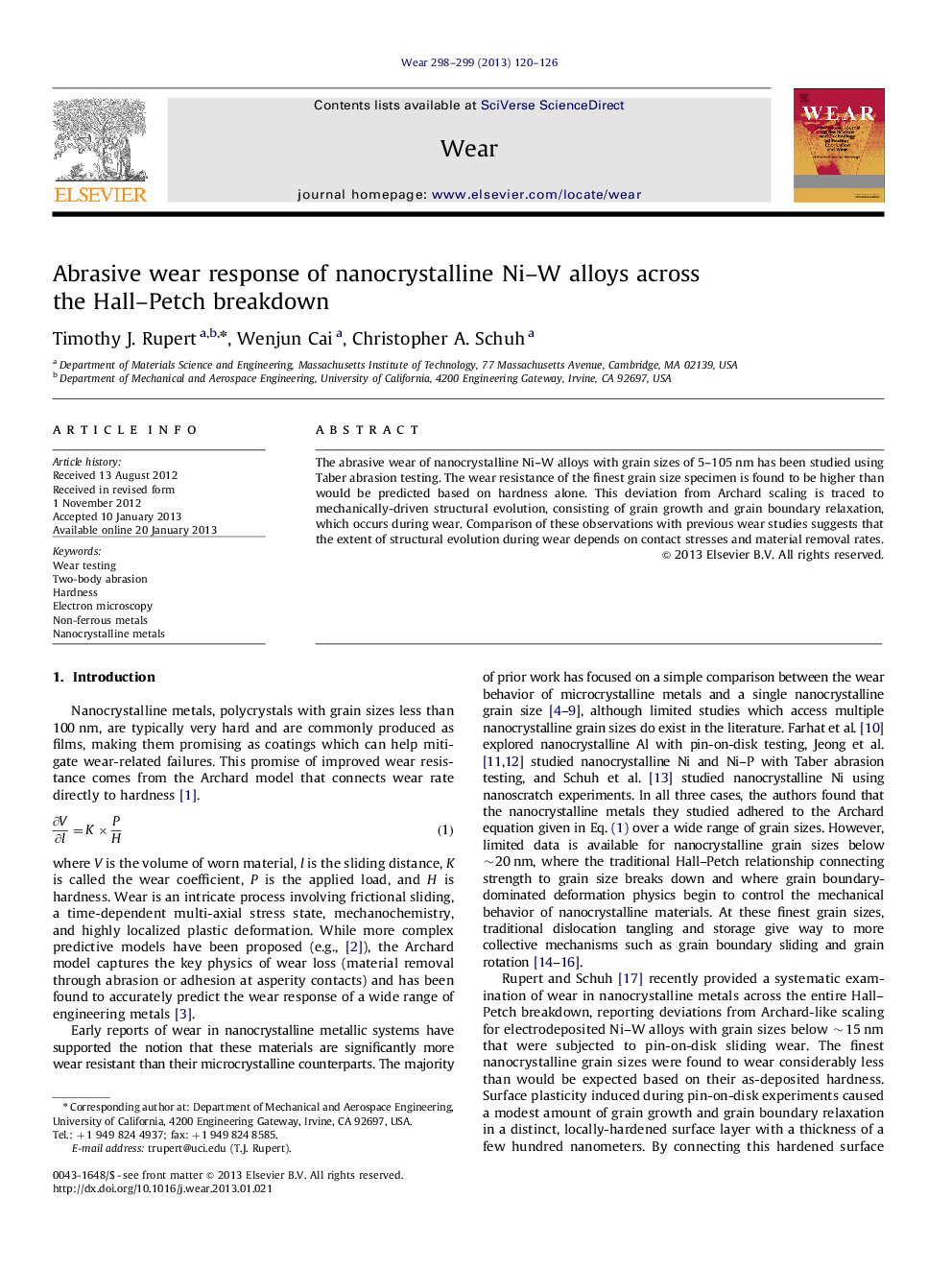| Article ID | Journal | Published Year | Pages | File Type |
|---|---|---|---|---|
| 617794 | Wear | 2013 | 7 Pages |
The abrasive wear of nanocrystalline Ni–W alloys with grain sizes of 5–105 nm has been studied using Taber abrasion testing. The wear resistance of the finest grain size specimen is found to be higher than would be predicted based on hardness alone. This deviation from Archard scaling is traced to mechanically-driven structural evolution, consisting of grain growth and grain boundary relaxation, which occurs during wear. Comparison of these observations with previous wear studies suggests that the extent of structural evolution during wear depends on contact stresses and material removalrates.
► Abrasive wear was studied in nanocrystalline Ni–W alloys with grain sizes of 5–105 nm. ► The finest grain size (5 nm) was found to wear less than predicted by Archard scaling. ► Structural evolution was observed near the surface due to local plasticity. ► Structural changes during Taber abrasion and pin-on-disk sliding are compared.
